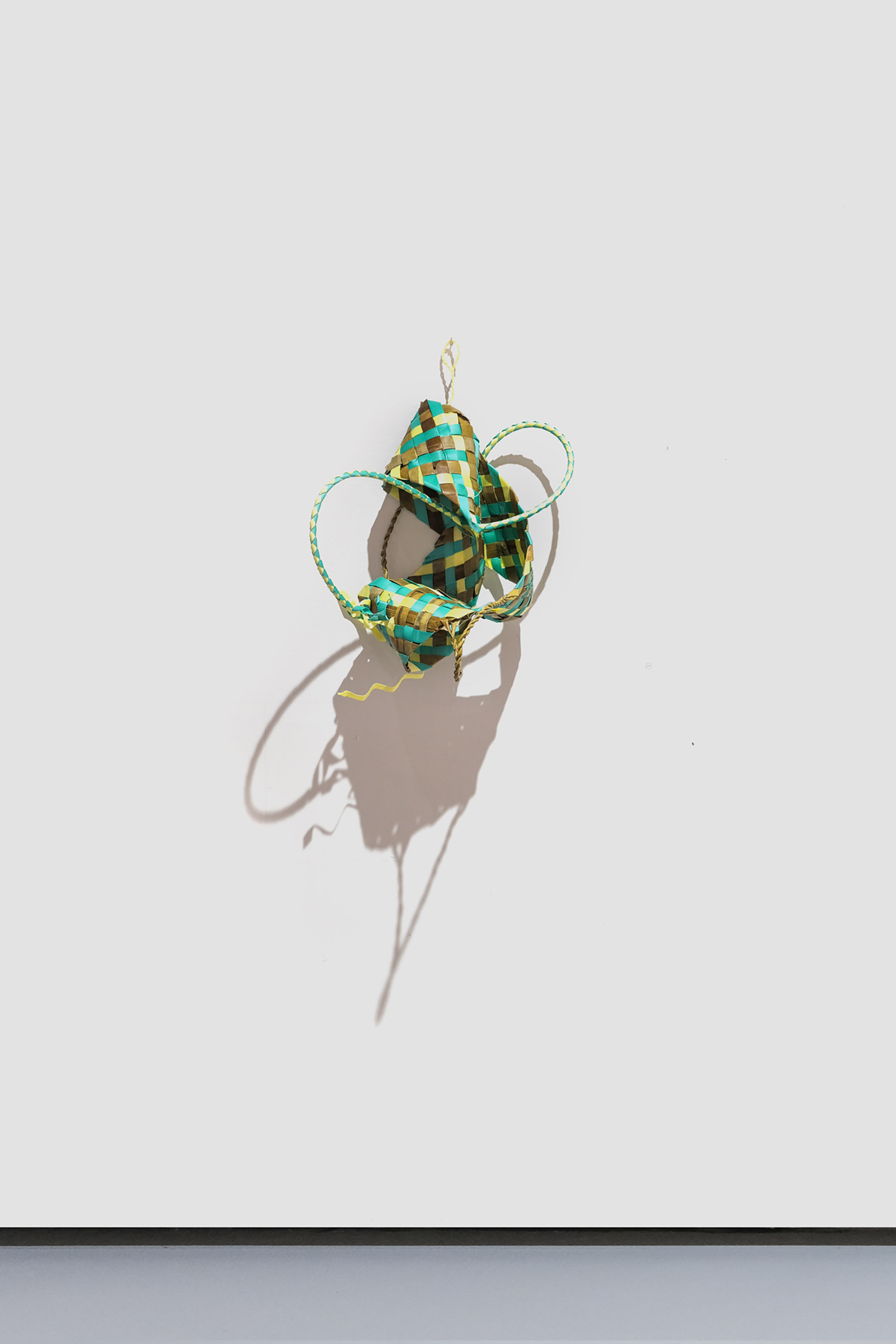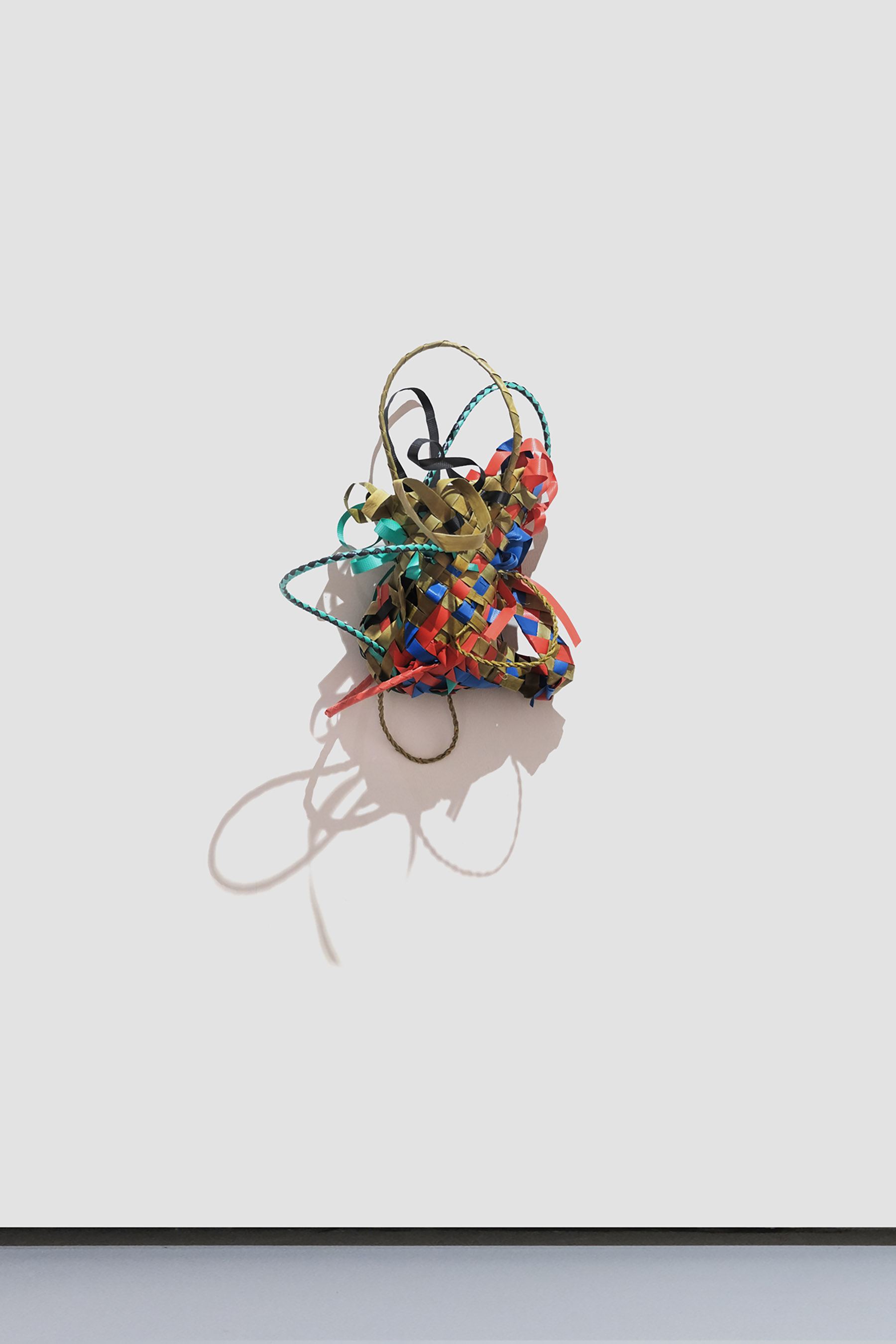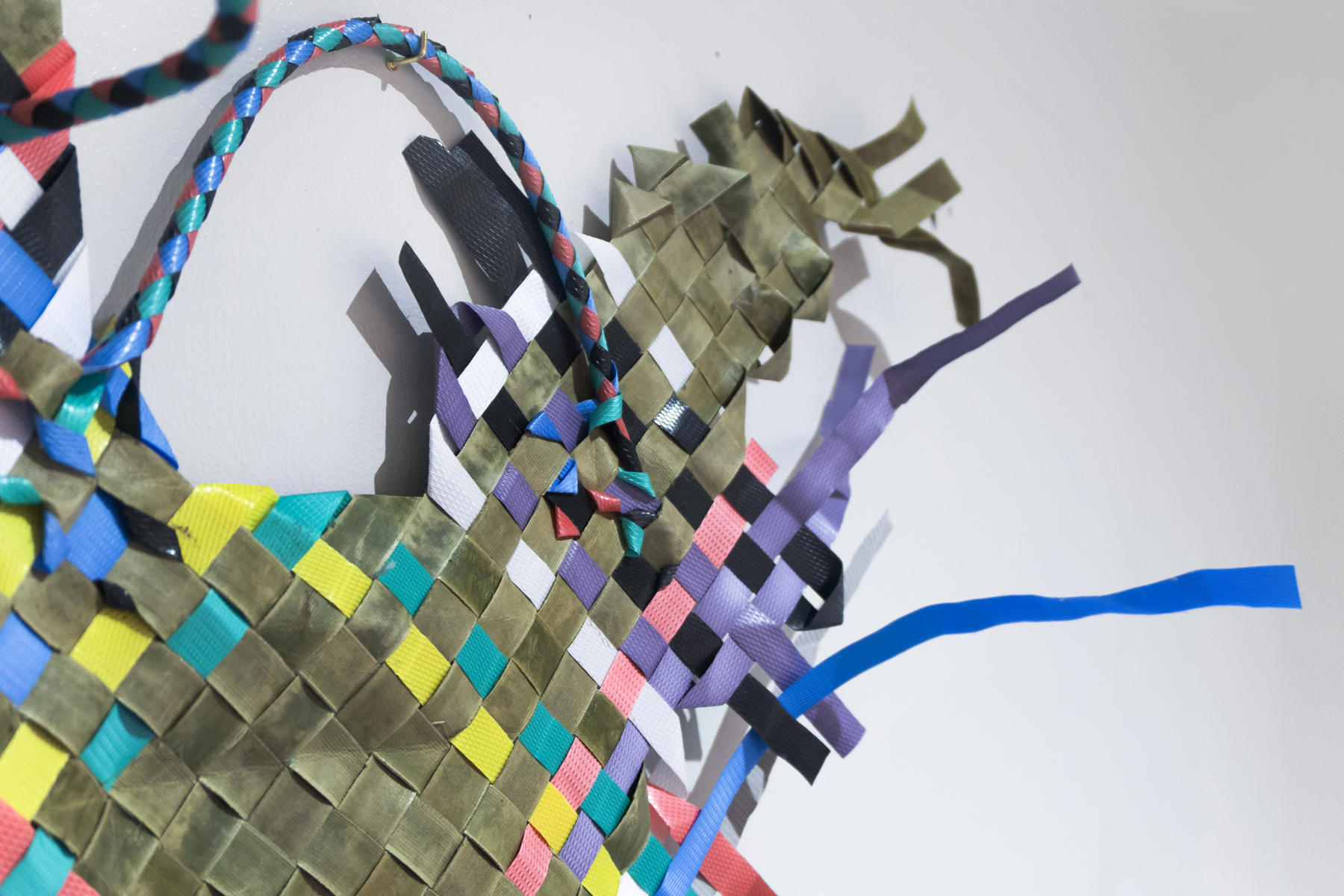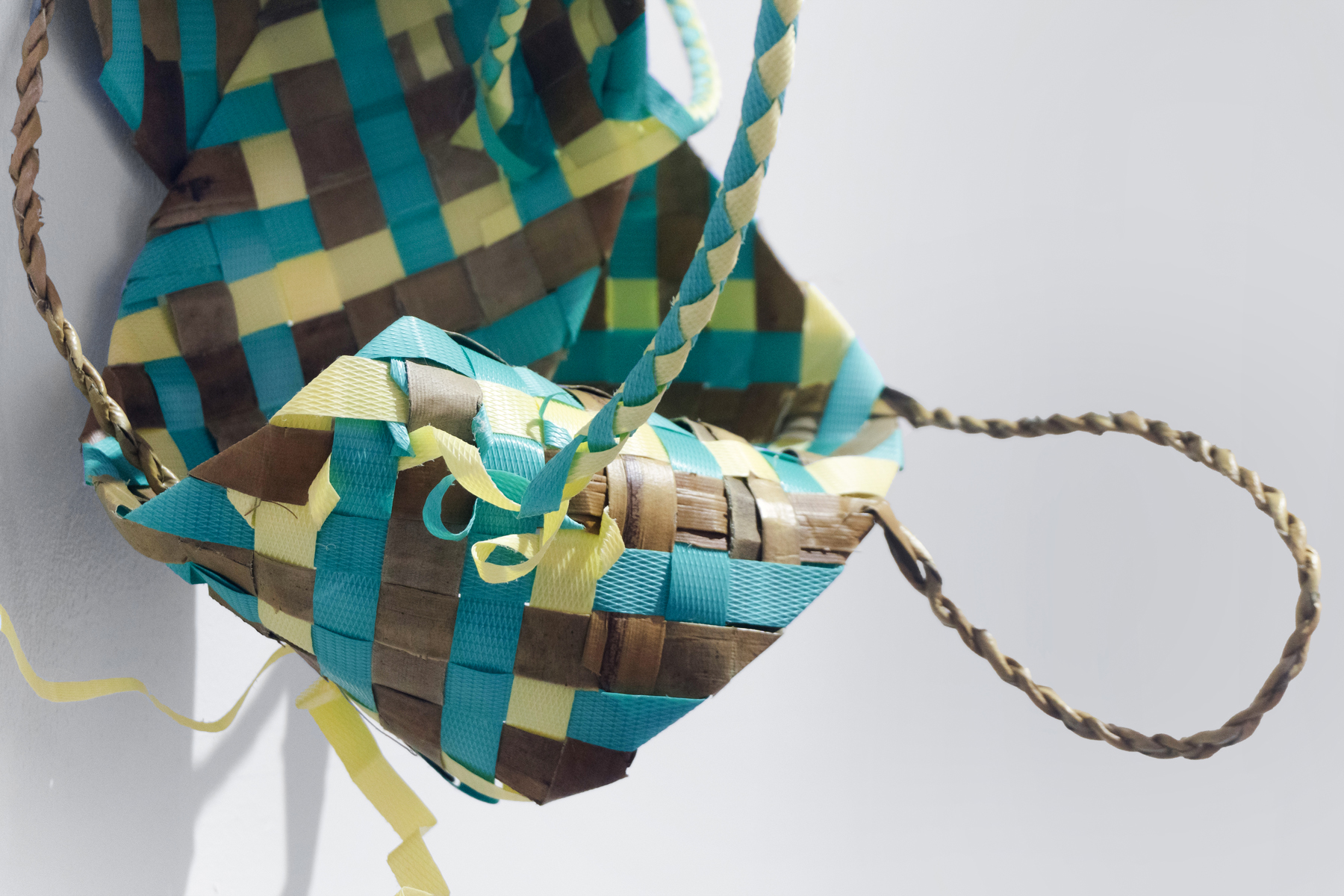Working on this project with Ally was an unexpected privilege. In recent years, many weavers I've spoken to have shared that banig weaving is declining, partly because making and selling bayong is easier and more profitable. So when Ally invited me to collaborate on her Bayong Project, I was genuinely excited.
Ally developed the initial concept based on her experience in Lucban, where plastic bayong are becoming more popular than those made from natural fibers like buli and pandan. We built a framework focused on open-ended material exploration rather than a final product— a sharp contrast to the practical, product-driven approach most weavers are used to.
Over four sessions, we deconstructed existing bayong and wove natural fibers with plastic strapping bands. There was something poignant in undoing the labor of the original makers, which raised questions for me: Why have industrial plastics become so central to bayong-making in the past decade? Strapping bands—once used to bundle commodities for shipping—are now bought new for weaving. I suspect their use began simply because they were abundant, an unintended consequence of global trade.
Their ubiquity reflects deeper economic structures. As materials used to move raw commodities, their presence highlights the Philippines’ export-oriented, import-dependent economy. The Philippines exports raw and semi-processed goods cheaply, imports expensive finished products, and even serves as a dumping ground for surplus goods. This imbalance isn’t accidental—it stems from imperialist trade relations.
The accumulation of plastic bundling is tied to neoliberal overproduction, where countries like the Philippines absorb the waste of the Global North. It’s also linked to denationalization, where our natural resources are opened to foreign control. These materials carry the imprint of global systems. Through this project, I began to see how something as “local” as a bayong is shaped by global imperialism—raising the question: what is local production without national industrialization?
Ally developed the initial concept based on her experience in Lucban, where plastic bayong are becoming more popular than those made from natural fibers like buli and pandan. We built a framework focused on open-ended material exploration rather than a final product— a sharp contrast to the practical, product-driven approach most weavers are used to.
Over four sessions, we deconstructed existing bayong and wove natural fibers with plastic strapping bands. There was something poignant in undoing the labor of the original makers, which raised questions for me: Why have industrial plastics become so central to bayong-making in the past decade? Strapping bands—once used to bundle commodities for shipping—are now bought new for weaving. I suspect their use began simply because they were abundant, an unintended consequence of global trade.
Their ubiquity reflects deeper economic structures. As materials used to move raw commodities, their presence highlights the Philippines’ export-oriented, import-dependent economy. The Philippines exports raw and semi-processed goods cheaply, imports expensive finished products, and even serves as a dumping ground for surplus goods. This imbalance isn’t accidental—it stems from imperialist trade relations.
The accumulation of plastic bundling is tied to neoliberal overproduction, where countries like the Philippines absorb the waste of the Global North. It’s also linked to denationalization, where our natural resources are opened to foreign control. These materials carry the imprint of global systems. Through this project, I began to see how something as “local” as a bayong is shaped by global imperialism—raising the question: what is local production without national industrialization?















